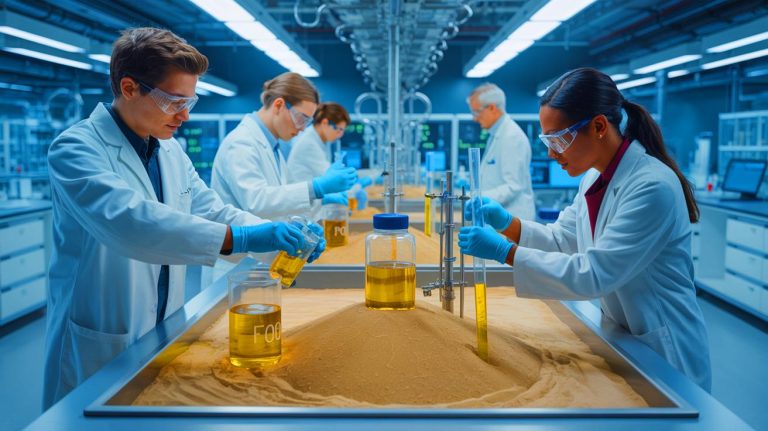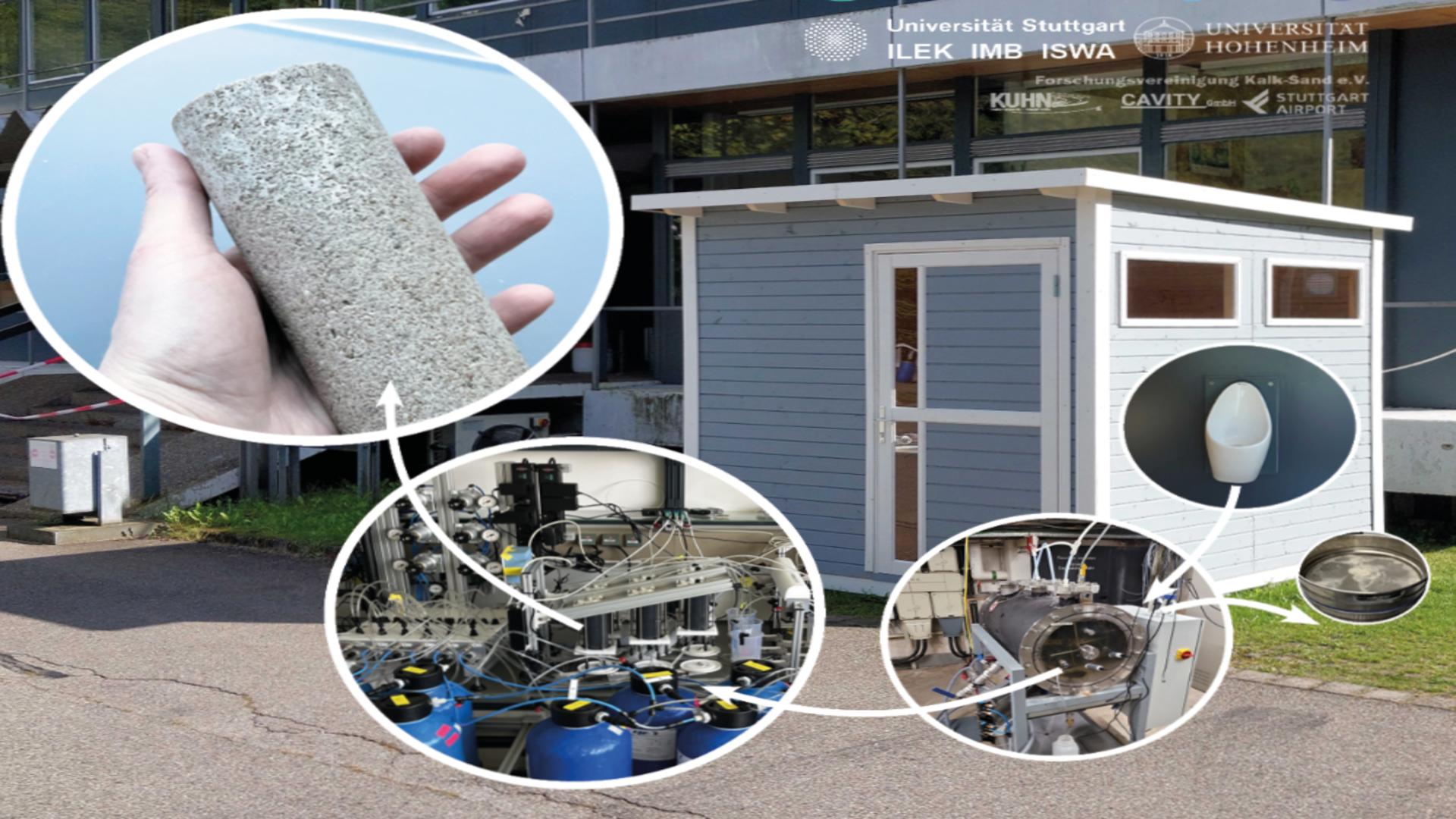| IN A NUTSHELL |
|
In a groundbreaking exploration of sustainable construction methods, researchers at the University of Stuttgart have pioneered a method to transform waste into a valuable resource. By converting human urine into eco-friendly bio-concrete, they are paving the way for a new era of green building materials. This innovative approach not only seeks to reduce the environmental impact of construction but also leverages a commonly wasted resource to create something beneficial for society. The project’s implications stretch beyond mere construction, hinting at a sustainable future where waste is a key ingredient in building our world.
The Science Behind Bio-Concrete
The University of Stuttgart’s revolutionary bio-concrete is the result of advanced biotechnological processes. At the core of this innovation is microbial biomineralization, where bacteria convert urea found in urine into calcium carbonate crystals. This process naturally binds sand particles, resulting in a material robust enough to be considered a viable alternative to traditional concrete. Importantly, the bio-concrete’s chemical composition closely resembles that of natural sandstone, indicating a harmonious blend with nature.
Led by Lucio Blandini, the research team has initiated the SimBioZe project to explore the untapped potential of urine as a resource. Supported by the Ministry of Science, Research, and the Arts of Baden-Württemberg, the initial feasibility study has successfully demonstrated that urine can be transformed into eco-friendly bio-concrete. This project not only highlights the potential of biomineralization as a sustainable alternative to conventional concrete production but also encourages a shift in how we view waste materials.
Sustainable Construction: A Growing Necessity
Concrete is the most widely used building material globally, with its production reaching approximately four billion tons annually. However, the environmental cost of producing cement, a key ingredient in concrete, is significant. The process requires heating limestone to extremely high temperatures, consuming vast amounts of energy and releasing harmful greenhouse gases into the atmosphere.
In response to this environmental challenge, the researchers have developed bio-concrete as a sustainable alternative. This innovative material integrates into a ‘wastewater-bio-concrete-fertilizer’ value chain, transforming waste into valuable construction materials and fertilizers. Through biomineralization, bio-concrete is produced by mixing bacteria with sand and flushing the mixture with calcium-enriched urine. This process solidifies the sand mixture into bio-concrete, producing a material chemically similar to natural sandstone.
Remarkable Achievements in Material Strength
The team at the University of Stuttgart has made significant strides in enhancing the strength of bio-concrete. By using technical-grade urea, they achieved compressive strengths exceeding 50 megapascals (MPa), making it significantly stronger than previous biomineralized materials. In comparison, tests with artificial urine yielded strengths of 20 MPa, while real human urine achieved around 5 MPa due to decreased bacterial activity during processing.
The researchers are optimistic about further enhancing the bio-concrete’s strength, aiming for 30 to 40 MPa, enough for constructing buildings up to three stories high. This improvement, coupled with the production process’s lower energy consumption and reduced emissions compared to traditional cement production, underscores the sustainability of their approach.
Future Prospects and Applications
As the research progresses, the team is evaluating the bio-concrete’s resilience under freeze-thaw conditions to assess its suitability for outdoor applications. The project’s second phase, which recently received additional funding, will focus on optimizing bacterial activity and refining the production process. A pilot facility at Stuttgart Airport is also in the works, aimed at processing urine collected from high-density public areas.
By creating a circular economy that reclaims nutrients and minimizes waste, the SimBioZe project exemplifies sustainable urban infrastructure. This innovative approach not only demonstrates the potential of bio-concrete in revolutionizing construction but also sets a precedent for how we can leverage waste to build a greener future. As we continue to seek sustainable solutions, could this remarkable innovation inspire further advances in the construction industry?
Did you like it? 4.4/5 (24)










Wow, turning pee into concrete? That’s some next-level recycling! 🚽🏗️
Is this safe for human health? I mean, it’s made from urine after all.
This is absolutely incredible! Thank you for pushing the boundaries of sustainability.
What happens when it rains? Does the urine smell come back? 🤔
I wonder how this affects the overall cost of construction projects.
As an environmentalist, I am thrilled to see waste being transformed into something useful!
Urine the future of construction! 😄